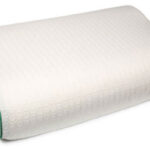## How to Care for Your Stainless Steel Cookware: Do’s and Don’ts for Long-Lasting Pots and Pans
To ensure the longevity of your stainless steel cookware, there are a few important care instructions to follow. First, after purchasing your new pots and pans, thoroughly clean them with water, adding a squeeze of lemon or vinegar to eliminate any odors. Bring this mixture to a boil, then discard it before using your cookware for the first time.
During use, there are a few key don’ts to keep in mind:
Don’t leave an empty pot or pan on a hot stove for too long.
Whether your stainless steel cookware has a non-stick coating or not, placing it on a stove at high heat can quickly exceed the ideal cooking temperature. Food placed in an overheated pan will burn, stick, and be difficult to clean. Additionally, non-stick coatings can degrade at temperatures between 200 and 250 degrees Celsius. So, always be mindful of the heat level and avoid letting your pan get too hot.
Don’t wash your cookware with cold water while it’s still hot.
Allow your pots and pans to cool down completely before washing them with cold water. Pouring cold water into hot stainless steel cookware can cause warping or cracking.
Don’t add salt to cold water in the pot.
It’s a common mistake to add salt or seasoning to cold water in the pot. Cold water doesn’t dissolve the salt crystals immediately, and they can cling to tiny spots on the surface, accelerating the formation of pits and damaging the cookware.
Don’t use steel wool or abrasive scrubbers.
If your stainless steel cookware has stubborn burnt-on food, avoid using steel wool or scrubbing too aggressively, as this can dull the shine of your pots and pans.
The best way to tackle burnt-on food is to fill the pan with water, add a suitable amount of baking soda, and bring it to a boil for 5-10 minutes. Let it cool, then wash as usual. Your cookware will be sparkling clean again!

Don’t leave dirty pots and pans overnight.
Try to clean your cookware promptly after use, as food residue can harden and become more difficult to remove if left overnight. When cleaning, use a soft sponge or cloth, avoiding metal scrubbers that can scratch the surface.
For stubborn burnt-on food, simply add a small amount of water to the pan and bring it to a boil. The food will loosen and can be easily washed away.
Source: Gia đình & xã hội
The Non-Stick Pan Revived: A Simple Guide to Restoring Your Old Frying Pan.
“There is a common concern that cooking on a non-stick pan that has been scratched or damaged can be harmful to one’s health. So, how can one restore and revive these pans to their former glory? Well, fear not, as there are indeed ways to salvage your non-stick cookware and ensure it’s safe for cooking once more.”






































